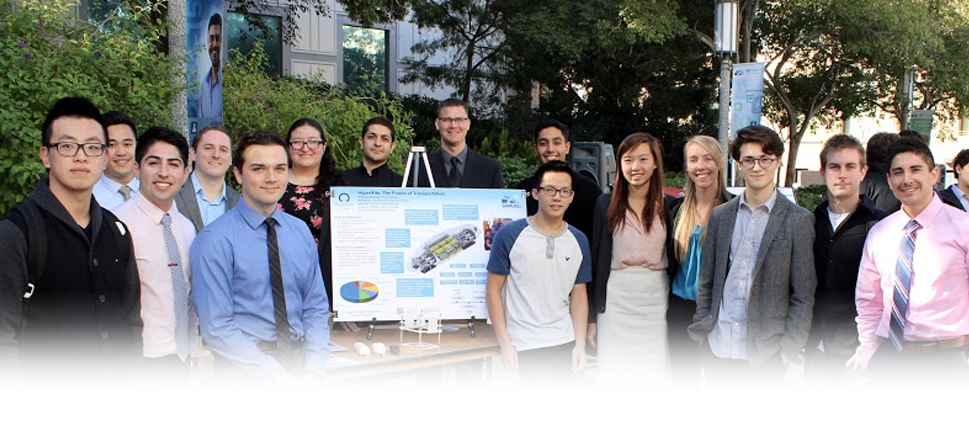UCI HyperXite Team Invited to Hyperloop Pod Design Weekend
 Dec. 23, 2015 - Los Angeles to San Francisco in 35 minutes? It is hard to imagine, but indeed that’s the idea behind Hyperloop, a conceptual high-speed transportation system proposed in 2013 by entrepreneur Elon Musk, founder of Tesla Motors and Space X. The system would transport people and cargo in pods that hurl through pneumatic tubes at over 750 miles per hour.
Dec. 23, 2015 - Los Angeles to San Francisco in 35 minutes? It is hard to imagine, but indeed that’s the idea behind Hyperloop, a conceptual high-speed transportation system proposed in 2013 by entrepreneur Elon Musk, founder of Tesla Motors and Space X. The system would transport people and cargo in pods that hurl through pneumatic tubes at over 750 miles per hour.
According to Musk’s proposal, the Hyperloop will consist of a low-pressure tube with pods that are transported at both low and high speeds. The pods will be supported on a cushion of pressurized air with aerodynamic lift. The pods will accelerate via a magnetic linear accelerator affixed at various stations on the low-pressure tube with rotors contained in each pod. Passengers would enter and exit Hyperloop at stations located either at the ends of the tube or branches along the route.
What seemed like a crazy concept two years ago, today is being pursued. Two startup companies are building prototypes. And SpaceX is sponsoring a competition, open to university students as well as independent engineering teams, to see who can develop the best pod. A group of UC Irvine students thinks it can.
Dubbed HyperXite, the team’s challenge is to design and build a 1:2 scale model pod that will traverse a mile-long tube in Hawthorne, Calif., in June 2016. The pod will be judged on safety, reliability, performance, flight and construction quality.
UCI’s HyperXite team is 23 members strong with nine professors advising. Based on their preliminary design, the UCI students have been invited to attend the competition’s Design Weekend Jan. 29-30, hosted by Texas A&M. Here, they will be judged on whether their design can go from vision to reality. They will face more than 120 university teams from 20 countries, including teams from six other UC campuses.
“We are implementing the latest industry technologies,” says Anthony Cirillo, a senior mechanical engineering student and the team’s operations and outreach manager. “For instance, we are designing a revolutionary braking system and implementing drag-reducing technologies that will in sum provide the smoothest, most economical ride possible.”
Professor Roger Rangel, principal faculty advisor for HyperXite, thinks the UCI students have a good chance. “This is an excellent opportunity for our students to use and combine their skills in a variety of areas and toward a potentially useful fast transportation system,” says the professor of mechanical and aerospace engineering. “They made the cut (for Design Weekend), which roughly reduced the competing teams from about 360 to 120.”
HyperXite project manager Jacob Gantz and chief engineer Patricio Guerrero, both senior aerospace engineering students, said the team was thrilled to be invited to the Design Weekend. Now, they have to get busy preparing.
“We have to finalize our design and test our assumptions,” says Guerrero.
“The timeline is tight, and we are using new technology,” says Gantz. “But I think SpaceX will appreciate our out-of-the-box thinking.”
-Lori Brandt
